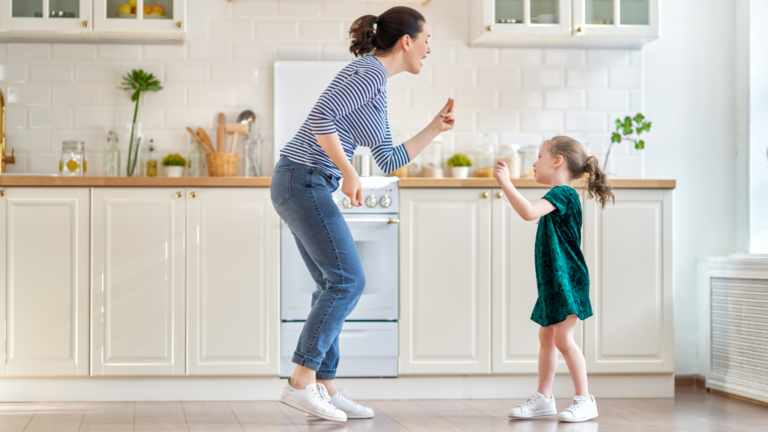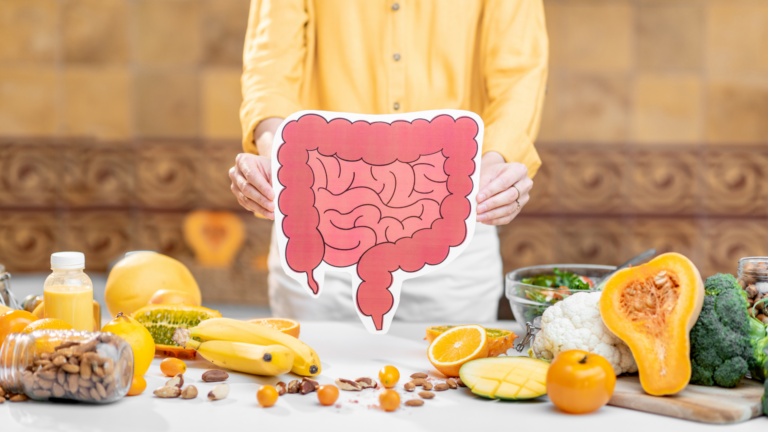Good morning to everyone, except those who can eat out without the fear of inflicting all hell in your gut for the next 24 hours!
Living with IBS is so much more than the odd belly ache or run to the toilet. IBS impacts all areas of your life. Even simple things like going out for a meal can feel daunting. We get it, we’ve been there too! But remember, the whole point of a low FODMAP diet is to improve your quality of life and eating out with friends and family is part of that.
The good news is that following a low FODMAP diet is not a game of perfect. You don’t have to follow it perfectly at every meal to get great results. You will likely get away with accidentally (or intentionally) eating the odd high FODMAP food occasionally. And, even if it does result in a blip in your gut function, you know you can treat the symptoms, dust yourself off and carry on.
Of course, this knowledge doesn’t always help calm the anxiety or relax the gut brain axis, so today we have 10 tips to help you eat out on a low FODMAP diet, enjoy your meal and minimise any potential undesirable outcomes.
1. Do your research
When it comes to eating out, the goal is enjoyment. Before you go have a look online at the menu. Are there meals that are already low FODMAP or could be made low FODMAP with a few tweaks e.g. fish or chicken that can be served without a sauce or a chicken salad that can be dressed with olive oil.
2. Decide what matters most
Then think about what you don’t want to miss out on. Maybe sharing a dessert with your partner? Maybe a glass of wine? Or maybe it’s the social connection itself? Then decide what you can give or take, for example, I’m not a fan of Christmas mince tarts, so happy to let those go in favour of sharing a dessert.
Making these decisions ahead of time helps you feel more relaxed prevents that last-minute overwhelm at the table.
3. Keep requests simple
It’s good to keep in mind that it’s a “Low” FODMAP diet and not a “No” FODMAP diet. Many foods are low FODMAP in smaller serves and we don’t need to worry about cross contamination. If a food can be picked out and left on the side of the plate, that’s perfectly fine and still considered within the standards of a low FODMAP diet. Additionally, Monash cut offs are very conservative to allow space for FODMAP stacking, and it’s very unlikely that one extra bite of broccoli is going to be a disaster.
Try to get your list of “no goes” down to a few foods that can’t be picked out e.g. skip the garlic sauce and but just pick out the mushrooms. If you can do this, the kitchen is much less likely to feel overwhelmed and find it easier to accommodate your needs with a delicious meal.
4. Snack before you go
Always have a small snack before leaving home. This way you won’t get to the restaurant starving and want to just devour everything that looks remotely appetising. This also means you are more likely to be satisfied with a smaller meal, reducing the chance of overdoing a higher FODMAP ingredient.
5. Calm your gut brain axis
How sensitive your gut is on any given day is determined by the nerves around your gut and your gut brain axis. The calmer you feel the calmer your brain axis will be and the less likely your gut nerves are to respond to a higher FODMAP food.
- Worrying about worst case scenario will make your subconscious more alert, so intentionally talk up best case scenario to balance things out.
- Include a few non-food moments of joy during the day to put your subconscious into a happy state.
- Use mindfulness and any other calming techniques you have up your sleeve.
- Plan out how you will respond to that annoying voice in your head that screams doom and gloom.
- When you sit down to eat, shake your hands and take 3 deep diaphragmatic breaths. This targets your gut brain axis and switches your body into the rest & digest mode.
6. Easy menu choices
When choosing from the menu look for dishes that are not overly saucy like soups, casseroles or risottos. The sauces are often prepared ahead of time and can’t be made without onion or garlic at short notice.
Options that are easier to make low FODMAP include:
- Grilled meat, fish, poultry served with salad and chips with dressings or sauces on the side
- Salads that can be customized with simple olive oil, vinegar or lemon juice dressings
- Eggs on sourdough toast or omelettes if you’re out for lunch or breakfast
- Opt for condiments like simple olive oil & vinegar dressings, mustard, mayo or tomato sauce which all have low FODMAP serves
Options that are harder to make low FODMAP:
- Sauces and dressings which often have onion and garlic.
- Soups, pastas and risottos which are often pre-prepared and difficult to modify.
- Mexican-style dishes that contain beans, onion or garlic
- Mincemeat may be prepared with garlic and onion
- Gluten-free menu options will remove wheat but may still contain high FODMAP ingredients like onion or garlic. Sometimes it’s easier to go with a low FODMAP serve of a wheat ingredient e.g. panko crumbs are low FODMAP at a full cup, so crumbed chicken is likely below this
7. Chew well and enjoy the company
Digestion begins in the mouth! Enzymes in your saliva start the breakdown of starchy foods. So, chew well, eat mindfully and enjoy the food and the company. Eating slowly has been shown to result in smaller but more satisfying serves while eating fast and talking while you eat often results in eating beyond satisfaction and more swallowed air both of which can contribute to bloating and make you feel icky.
8. Watch the alcohol
Alcohol and fizzy drinks are gut irritants which can make your gut more susceptible to being irritated by FODMAPs. If you’ve ever overdone the alcohol, you will also know the calling of that late night kebab, which is anything but low FODMAP. So have a drink, but sip it slowly, savour it and alternate with water.
9. Return to your baseline diet
After the meal, return to your baseline diet. This will help calm your gut again as quickly as possible, keeping any symptoms to a minimum or even avoiding them altogether. If you do have a blip in your digestive comfort, respond rather than react by reminding yourself it will pass and treating it as necessary.
10. Go for a walk after dinner
A short walk after dinner isn’t just good for your gut, also encourages your body to digest in peace. The gentle rhythm of walking supports gut motility, helps relieve pressure or bloating and invites calm. It’s a small, soothing ritual that signals to your body: “You’re safe. You can digest now.
Final thoughts
About that ‘good morning to everyone except those who can eat out without fear’ feeling? Let’s retire it. You’ve now got the tools, the mindset, and the confidence to say yes to dinner plans, without that sense of doom.
Eating out is part of a full, joyful life and with practice, you’ll learn how to make it work for you. So, here’s to more good food, good company and good mornings for everyone, IBS and all.”
If you’re feeling unsure or like everything is upsetting your gut, I’m here to help. I love food, I love living life and I believe you can too. Together we can find the right balance of variety and gut management strategies to give you the best of both worlds. I’m ready and waiting to support you. Book an appointment here and take the first step towards enjoying food and life again.








One Comment